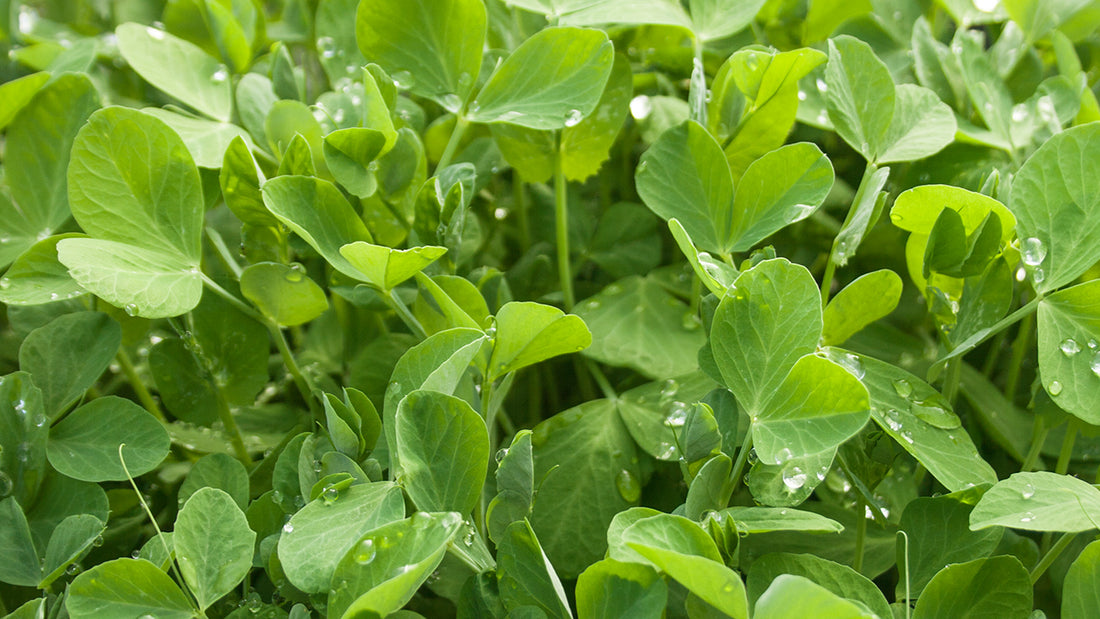Using Cover Crops to Improve Soil Health
Cover crops planted in the fall are now growing like weeds. But now what do you do with them? They should be turned into Green Manure! Time to knock down your cover crop. In our video on Green Manure, Tricia talks about when and how to turn your cover crop into a fantastic soil additive.
Timing of the Knock Down
The timing is determined by when the next crop will be planted and the life stage of your cover crop.
- Cut down your cover crops before they go to seed.
- A good indicator for when to knock down the cover crop is when one half of the crop is flowering. This allows you to take advantage of maximum biomass.
- After cutting, let it decompose so that you get the maximum benefit to the crop that you're going to plant afterward.
- After cutting, allow at least 3 to 6 weeks before planting your next crop. It's important to wait because your cover crop will be decomposing and during this decomposition process you will temporarily lock up some of the nitrogen in the soil.

What is the Best Way to Knock Down the Cover Crop?
There really is no best way. It depends on the tools you have on hand and the amount of cover crop you want to turn into green manure. You can cut it and compost it, you can weed-eat it or mow it and just let it lay on the ground, or you can till it into the ground.
The three main methods of cutting down cover crops are: undercutting, mowing and rolling. Undercutting is when you draw a blade under the soil and you slice the cover crop underneath the soil. For mowing you're going to mow down the crop with your lawn mower a weed whacker, or a scythe. This chops the crop up fairly finely and it will decompose quickly. Rolling is basically running your tiller over the plants with the tines turned off. However, this may not always kill the plant and thus not decompose.
Tilling or Rolling
- Tilling it in is the fastest and easiest way to incorporate your cover crops.
- Rototill the crops into the ground.
- The advantages of this method are faster decomposition and less nitrogen loss into the atmosphere.
- The disadvantage is that you don't get the weed suppression or water conservation while the crop decomposes.
Cut it and Compost it
- You can use a hand sickle, a scythe, weed-eater or mower.
- The advantages are that you're adding finished nutrient-rich compost back into the soil (eventually).
- This is a great option for raised bed cover cropping.
- The disadvantage is that it's more work to cut, compost and then add the compost back into the soil and it can take several months instead of weeks.
Mow or Weed-Eat
- After cutting the cover crop down, let it lay on the soil surface as a mulch as it decomposes.
- This will help with water conservation and weed suppression.
- This method chops the cover crop into small pieces and will speed up decomposition.
No matter what method you choose, the most important thing is that you will be improving your soil with the addition of green manure!
Find more information on no till in your garden in our resource center.


22 comments
I’m also in the Puget sound and I’m finding large clumps that is hard to till. First time doing this and not sure if it’s going to work that great for my raised beds.
Elizabeth, the red clover is a perennial clover. It will not die back in the summer. If you want to remove it, you will have to pull it up, or just let it grow.
I planted red clover in the fall and it has made a nice mat over my flower bed. I have a lot of bulbs and perennials that I don’t want use a rototiller, pluse I don’t have one. I am going in with a hand hoe, cutting into the clover, and yanking it up. I’m just leaving the clover on top. I’m not sure that I’m getting all the roots out. Am I going to have weed issues? Ps I live in south Puget sound Washington state if that matters c
Laurie, you should not be having issues with the cover crop seeds unless the plants were allowed to go to seed. Cover crops should be cut down before they go to seed. With cover crops many people rotate planting in beds so not to hold up any planting.
I last commented on this on April 4, 2018. As an update, I did plant covers recommended for cold climates, and I used the Pfeiffer Biodynamic Field Spray suggested in the article to speed up decomposition. I did this for two seasons, and will not be doing this again. I got some growth from the cover seed and was able to till that in, but I believe it was more trouble than it was worth. There just wasn’t enough time for really adequate growth prior to the time I needed to get seedlings in the ground, and many of the cover seeds hadn’t sprouted prior to tilling. These seeds haunted me all summer by becoming weeds in my beds which then had to be removed.